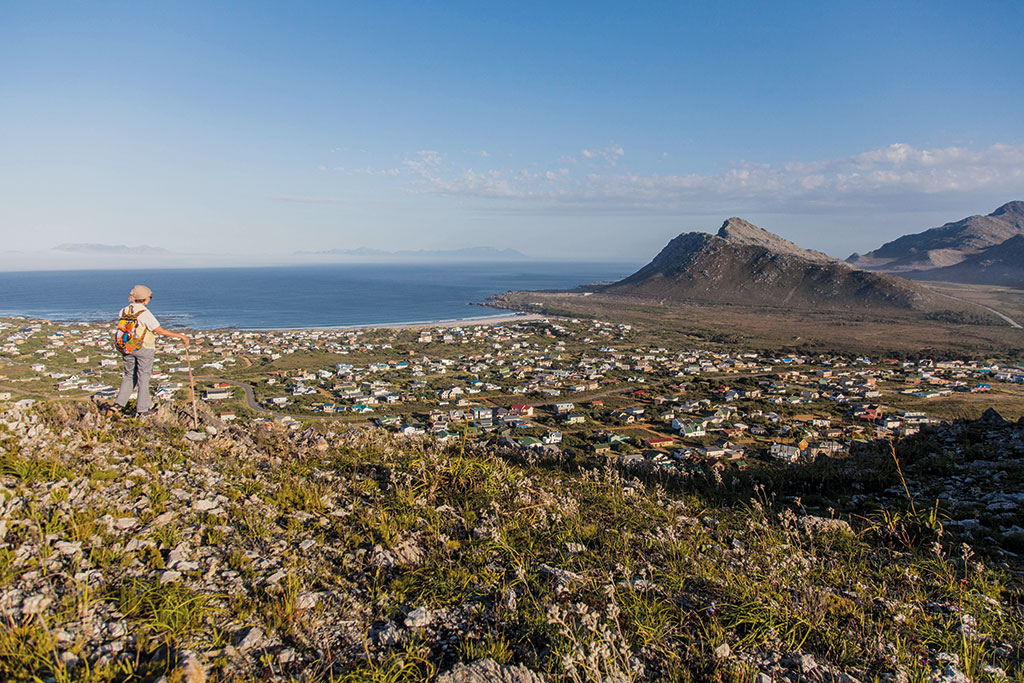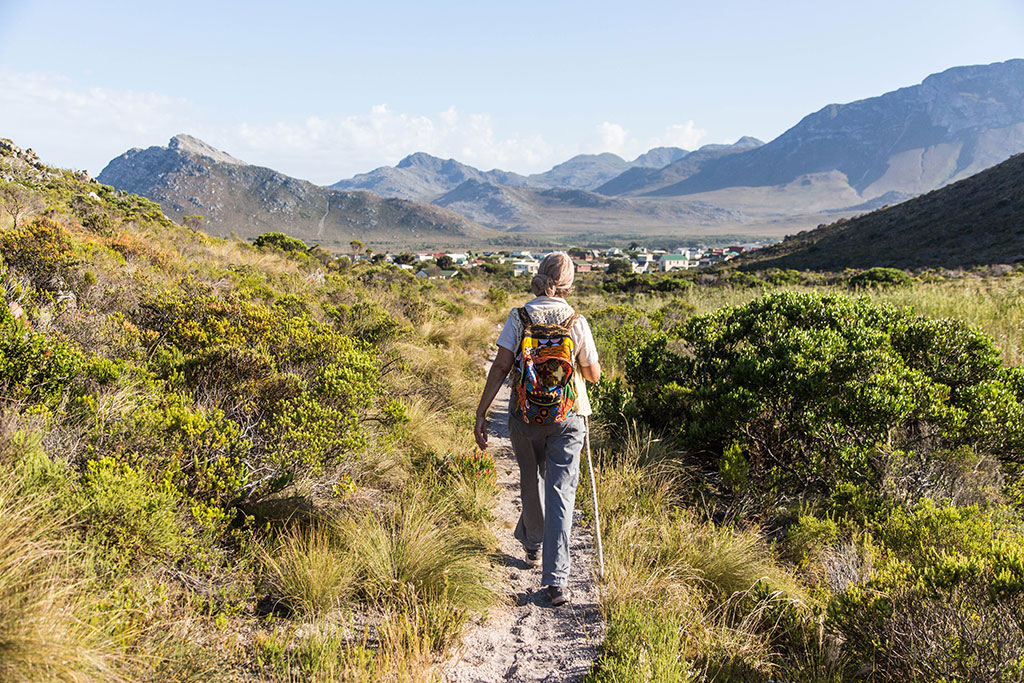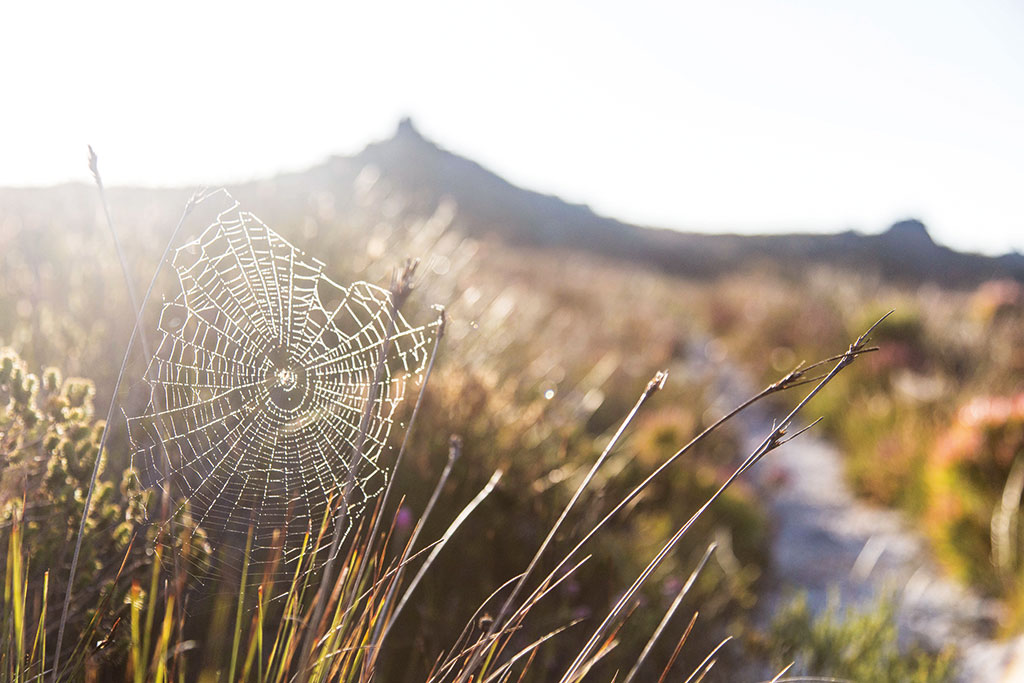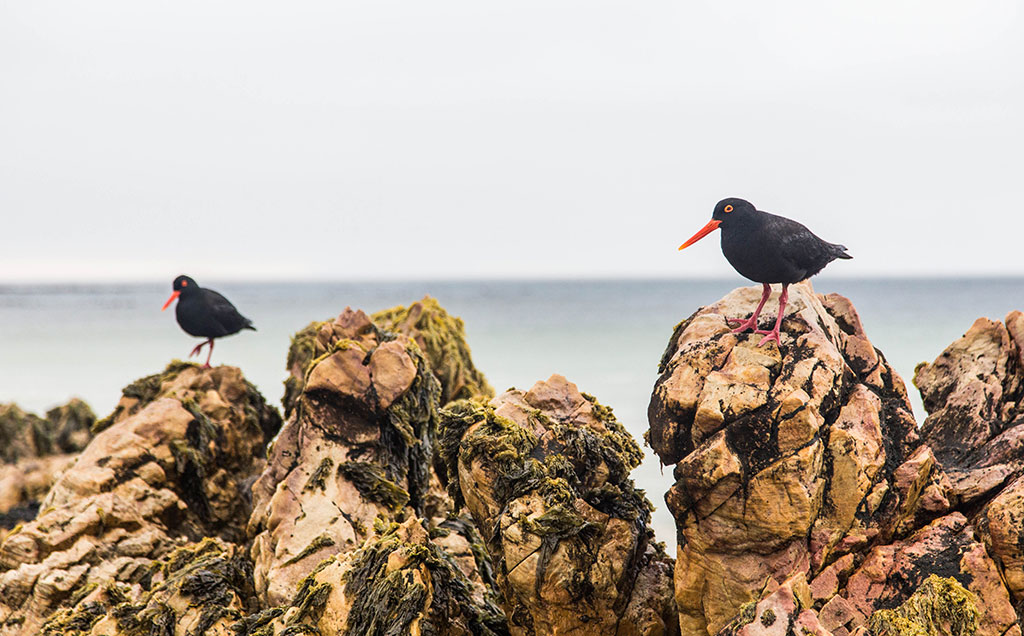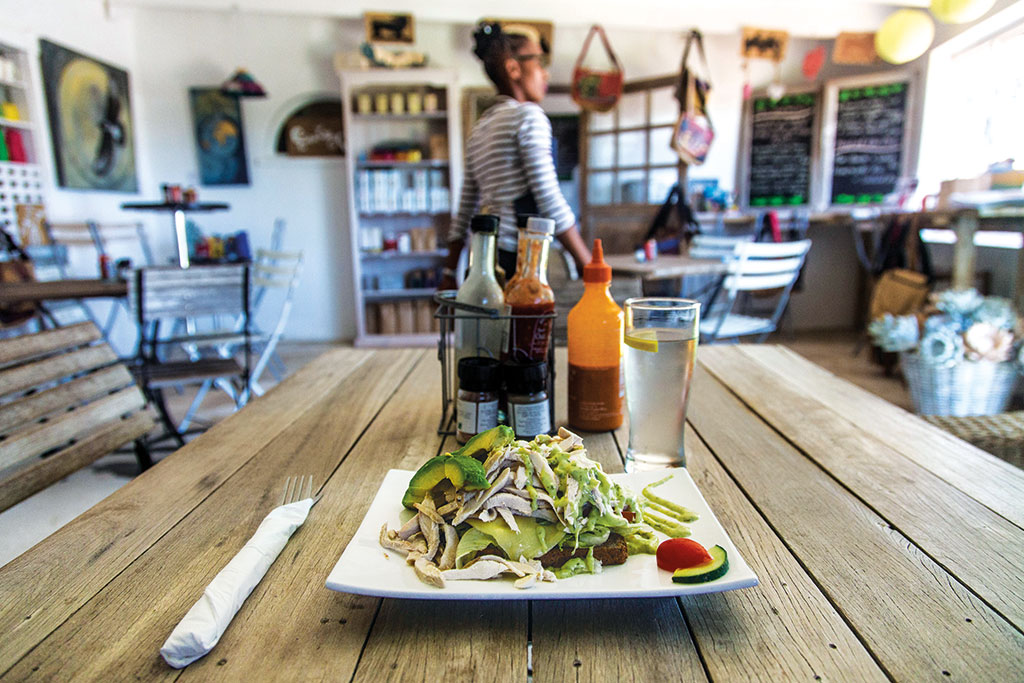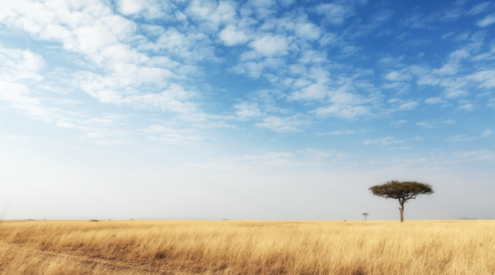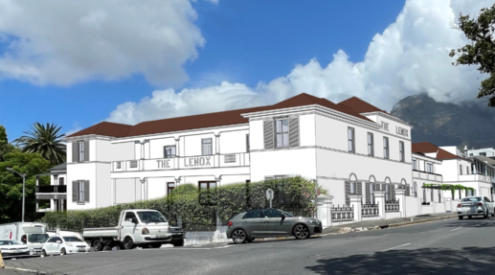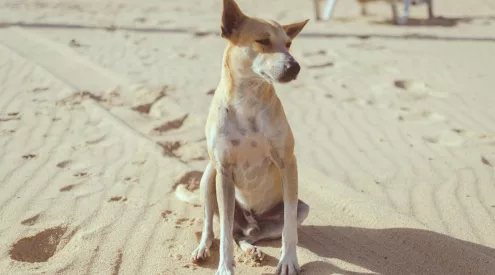There are no streetlights and few fences in this fynbos-covered town. Nature plays a leading role in Pringle Bay and, as Matthew Sterne finds, residents are determined to tread lightly on the Earth.
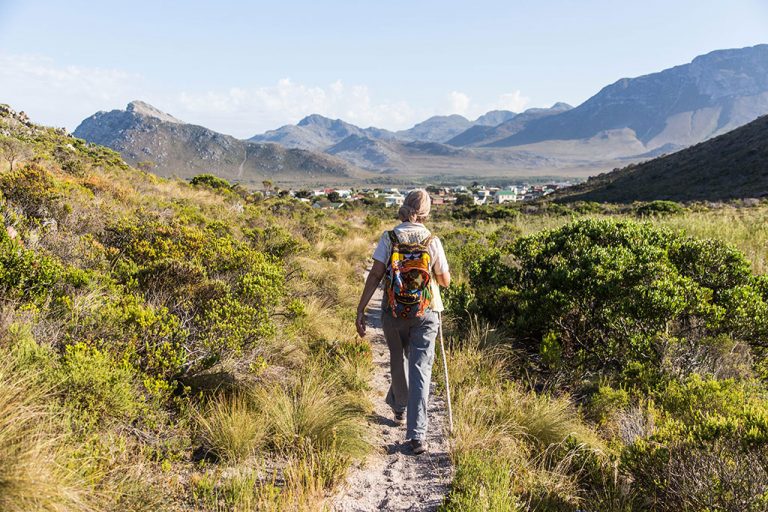
After 30 minutes of walking up Brodie Link, hikers are presented with a view overlooking Pringle Bay. Image by Matthew Sterne
The insider
Morris Rosenblatt moved to Pringle Bay after buying the only restaurant in town, sight unseen. He planned to come for two years and has stayed for 22.
The peaks of Hangklip and Klein Hangklip rise either side of Pringle Bay like arms of a monumental armchair. Between the two peaks lies a beach nearly a kilometre in length. At one end, near a milkwood forest, the beach meets the Buffels River where elusive yet playful otters are said to roam at dusk and dawn. Dolphins and whales cavort in the turquoise sea, oystercatchers nest on the beach and caracals hunt dassies on the rocks. As Morris Rosenblatt tells me, ‘Living in Pringle Bay means living with nature.’

A spiderweb catches the rising sun on Brodie Link. Image by Matthew Sterne
Morris moved to Pringle Bay in 1996. Back then, just 190 people had settled in the village, there were few houses and the roads were all gravel. Today, there are nearly 2000 inhabitants and, much to Morris’s chagrin, 10 restaurants. Many of the roads, however, are still gravel. And that’s the way the locals prefer it. A few years ago the town voted against installing street lights.
‘You know, there are lots of interesting people living here,’ Morris tells me over a Windhoek Lager in his restaurant, Miems. ‘Chris Barnard used to have a house here and so did the film director Dirk de Villiers. What makes it so interesting is that there are no nine-to-five people. Lots of locals work in the film and advertising industry and use this as their base between shoots. There are writers, artists and restaurateurs. We call the people here the driftwood of society. It’s a very relaxed place and very social too. There’s no structure and there’s no normal. That’s why we love it.’
Before World War II (when Italian prisoners-of-war built the spectacular Clarence Drive), this coast was one of the most inaccessible stretches of the South African shoreline close to a city. A treacherous, slippery footpath that involved crossing the Steenbras River was the only means of access. For many years this remote corner of the Cape harboured ‘drosters’ – outlaws, runaway slaves, deserters from ships, and the remains of the indigenous Khoi tribes. Driftwood of a previous era.
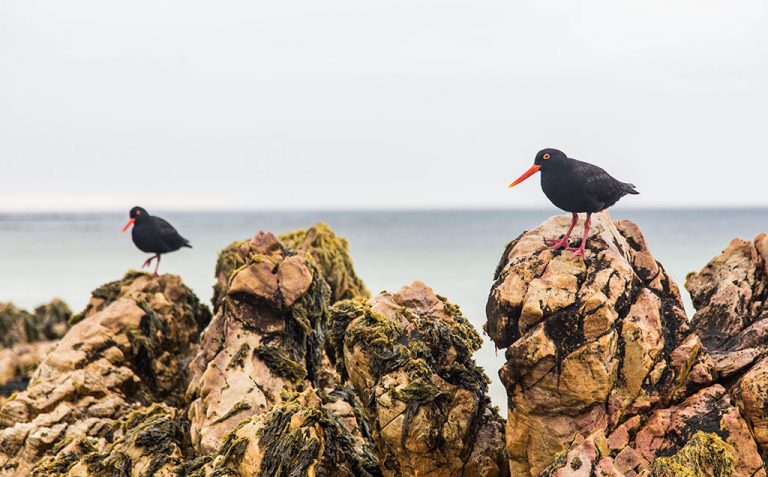
Pringle Bay beach is a haven for oystercatchers, where they nest amid the rocks. Image by Matthew Sterne
‘The nature here is also a big attraction,’ Morris says. ‘I’ve seen leopard spoor in the centre of town, and people come from all over the world to see the Cape rockjumper bird between Pringle Bay and Rooi Els. Baboons are a constant presence too.
One of the legendary stories is of a woman who was paralysed from the neck down and would sit in her wheelchair on her deck. One day she was by herself and a troop of baboons approached her. Unable to move, she just sat there while the baboons started grooming her, and over the years they kind of adopted her into their troop.’
Animals in the area are not restricted to wildlife either. Pringle Bay is also home to a resident sheep. Everyone I meet tells me about Montana. She was rescued in Swellendam and given to a local teacher who takes her to school with her every day. She also takes her for walks on the beach where she prances around. ‘She’s the happiest sheep I’ve ever seen,’ one local tells me. ‘She literally does a leap for joy when she runs onto the beach.’
Then there are the alpacas. Arthur Rae is a retired US Army helicopter pilot who bought the open plot next to him to keep as a green zone. To combat the overgrowth he and his wife, Christine, decided to buy three alpacas. And just like that, one of Pringle Bay’s only tourist attractions was inadvertently established.
‘In terms of things to do, there are lots of different hikes. There is Pringle Peak and Brodie Link, but the best one is up Hangklip. In whale season you can see pods of whales from up there scattered in the ocean. Another thing is to go to the slipway past the Hangklip Hotel. There’s a lovely walk past the lighthouse to Moonlight Bay. There’s never anybody there and you can swim kaalgat,’ says Morris.

The Hangklip Lighthouse at Kleinbaai was built in 1960. Image by Matthew Sterne
That evening, I drive to Hangklip Hotel, two kilometres out of the village on a gravel road. It’s an impressive location as the hotel sits directly below the mighty cliffs of the distinctive, looming rock. The hotel has live music on weekends and a reputation for wild parties. ‘I studied engineering and geology,’ Morris told me earlier. ‘I think if you put measuring instruments at Hangklip you’d figure out why everyone goes bananas there. All rocks radiate energy, so that radiation must be having an effect on people.’ The building itself has a history of hauntings and strange happenings. It was originally built as quarters for British servicewomen who, during World War II, operated a top-secret radar station from the mountain slopes above the hotel to track U-boat activity. The remains of the station can still be seen today.
I meet the owner, A (that’s what he prefers to be called), at the bar. He has owned the place for 20 years but only moved from London 18 months ago after being lured by the people. ‘The sense of community here is amazing. If we need a bag of frozen chips, we can borrow it from any of the restaurants in town and replace it tomorrow. There’s a village WhatsApp group and if someone needs help at 2am with a broken gate, someone else will be there within five minutes.’ The community gets together often, especially for conservation projects. There’s a hacking group that meets once a month to eradicate alien vegetation, and there are also regular beach clean-ups. And they’ve recently taken on the challenge of ridding the village of single-use plastics such as straws, coffee cups and styrofoam containers. The local fish-and-chips shop, Hake Away, for example, has biodegradable straws and packaging.

Arthur Rae feeds his alpacas on the plot next to his house. Image by Matthew Sterne
Harriet Joao, one of the festival committee members, tells me, ‘We’re part of the Kogelberg biosphere and surrounded by incredible fynbos. We have a healthy flowing river and estuary and a beautiful beach. We’ve got it all and we don’t want it to get spoilt, so we decided to take this on. It’s environmentally friendly and we have a big focus on ocean conservation, which is why our hashtag is #thinkingblue.’
Another example of this mindset is the eco-school, Pringle House (the same school Montana the sheep attends). Turning 10 this year, the school is a product of a programme implemented by the Wildlife & Environmental Society (Wessa) that supports environmental learning in the classroom. ‘It’s not a separate thing – the goal is to bring the environment and sustainable living into all our teaching and allow kids to learn on a practical level,’ says the school head, Heather Miller. In the past two years the number of pupils has doubled, further evidence of Pringle Bay’s growing popularity.
But what does all this mean for visitors like you and me? It means the water is clean, the beach is pristine and the oystercatcher nesting areas well cordoned off. Strangers wave, porcupines dig up the fenceless gardens, and you’ll probably find a sheep cavorting on the sand, mirroring your own state of bliss as you walk on a near-deserted beach.
Where do the locals go?

The Hangklip Hotel. Image by Matthew Sterne
Lezette van Jaarsveld, retired PR officer
‘My favourite thing to do is walk with my dogs in the hills around town. Twice a day, every day. The hiking is also good, with Brodie Link and Hangklip the best.‘
Lauren Cornell, freelance photographer
‘I like to go surfing on main beach, or if the waves aren’t working I go for a paddle up the Buffels River.’
Morne Lloyd, restaurant owner
‘The main beach is great for a walk but I actually prefer Moonlight Bay. It’s beautiful, secluded and very quiet.’
Plan your trip
How to get there
Take the N2 out of Cape Town and just before Sir Lowry’s Pass, take the M165 to Gordon’s Bay and left onto the R44, 33km later, on one of the world’s most beautiful drives, you’ll find Pringle Bay.
Where to stay
The Barnacle has a location that’s hard to beat. Wedged between beach and estuary, guests can stroll onto the sand or go for a river paddle. The five self-catering cottages are well maintained and tranquil. From R400 per person sharing. 0845249706
Belle Mer is a luxury B&B with three spacious en-suites. Across the road from the ocean, there are unhindered sea views from the comfortable rooms. From R700 per person sharing. 0282738104
Mermaid’s Tail is a family home that sleeps eight and has it all: there’s a games room, swimming pool, fireplace, braai area, wrap-around deck and even a rack of bicycles to help you get around town. R2500 a night. 0832667042
What to do
Go for a hike. There are some lovely walks in the hills and mountains surrounding the village. Brodie Link (90 minutes) and Hangklip (three-and-a-half hours) are the best of the lot.
Go to the beach. The main beach is good for swimming, walking dogs, and children love playing in the shallow estuary. Moonlight Bay is a 10-minute drive out of town but the stunning water and seclusion is worth the effort.
Visit the alpacas at La Hacienda. The three cream- coloured alpacas – Don Juan, Truffles and Mickey Blue Eyes – are friendly and come to the railing if you approach quietly. They can be found on an open plot at 1015 Elizabeth Road.
Where to eat

Lemon and Lime. Image by Matthew Sterne
Hook Line & Sinker is an iconic seafood restaurant that’s been going for 21 years. The brash and entertaining owners are the hosts, waiters and chefs. It’s celebrated for fresh fish, wild prawns, steaks and choc pots. Booking essential. R150 is the average price for a meal. 0282738688
Bistro 365 & Simply Coffee is very popular and another Pringle Bay stalwart. The Asian pork belly is sublime and apparently the lamb shank is too. The wine list is equally impressive. Average cost of a meal is R130. 0282738931
Lemon + Lime was referred to by one local as the ‘Melissa’s of Pringle Bay.’ The open sandwiches certainly merit such a description and the on-site deli sells meats, cheeses and olives. Sandwiches from R66. 0736980737
Miems hosts a ‘Locals Night’ on Thursdays in winter (from May), where a resident makes a three-course dinner. Who cooks changes every week. R70 per person. 0282738764









